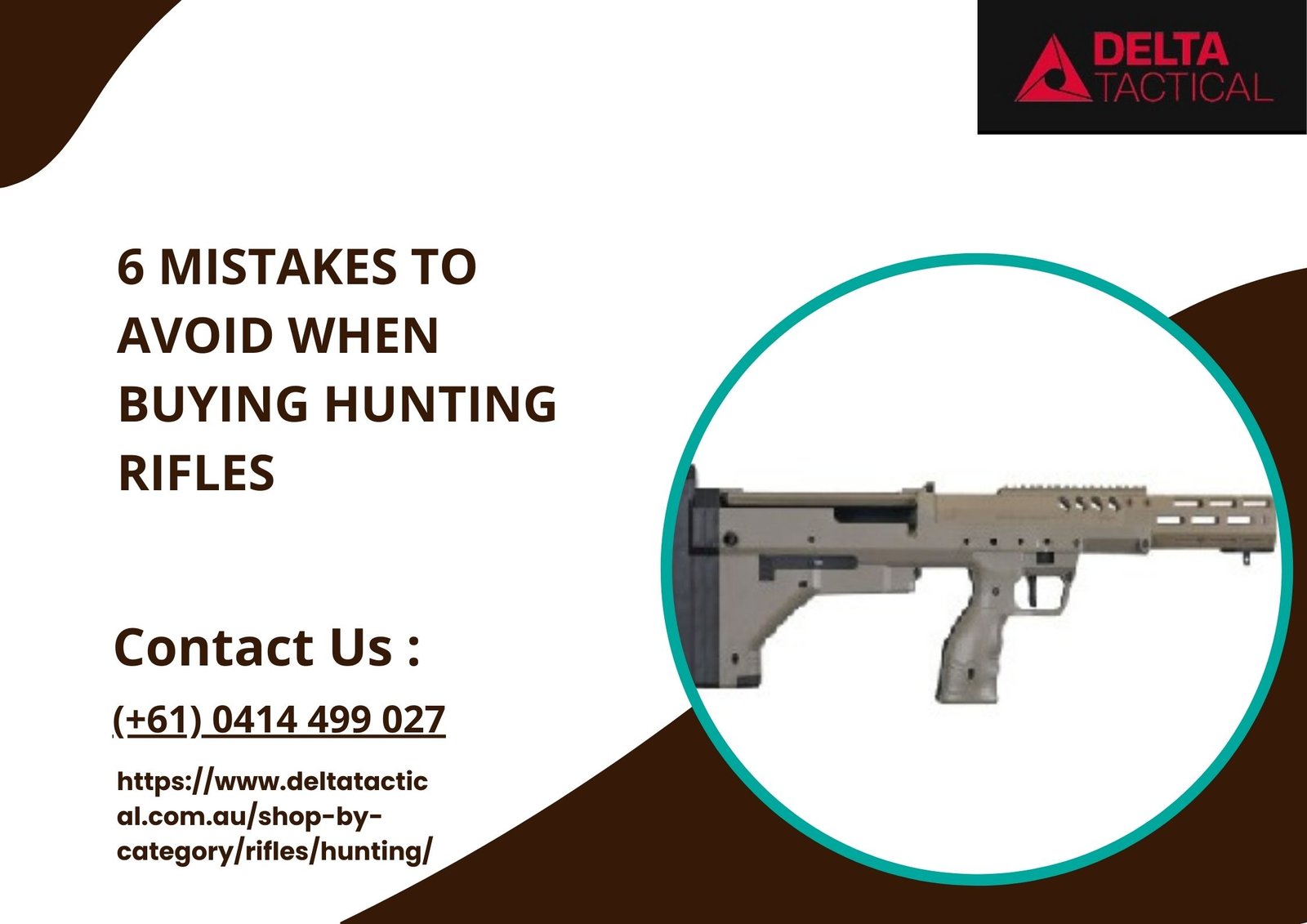Buying hunting rifles is more than just a quick stop at the gun shop. It’s an investment in your time, money, and safety. Still, many buyers, especially first-timers, rush into it and end up with a rifle that doesn’t suit their needs. With so many options on the market, it’s easy to get overwhelmed or swayed by looks and price alone. If you’re planning to buy one, here are six common mistakes worth avoiding.
1. Ignoring Fit and Comfort
A rifle needs to feel right when you hold it. If it doesn’t fit your frame, it’ll throw off your aim and wear you out faster on long hunts. Key things to check include weight, length of pull, and how balanced it feels in your hands. Don’t just go by specs. Try to shoulder the rifle if you can. If buying online, take time to check the measurements to match your body size. Even a well-reviewed model can perform poorly if it doesn’t suit you physically.
2. Overlooking Ammunition Compatibility
Different hunting rifles use different calibres, and each one is built for a purpose. Using the wrong ammo can lead to poor accuracy, or worse, cause harm without a clean shot. Always match your calibre to the game you’re targeting and follow your local hunting laws. A .243 might be great for smaller animals, while larger game may call for a .308 or something heavier. Ignoring this can result in ineffective or even dangerous results in the field.
3. Skipping Research
Don’t just buy the most popular model or the one your mate recommends. Different hunting styles, terrain, and weather conditions call for different features. Look for rifles that fit your specific needs, not what the marketing claims. You’ll also want to consider after-sales support and parts availability. A bit of research upfront makes it easier to avoid a mismatch.
4. Focusing Only on Price
It’s tempting to go for the cheapest option, but that can lead to frustration in the field. A low-cost rifle might not hold zero well, or it could be uncomfortable to shoot. On the flip side, the most expensive rifle isn’t always the best for your needs. Stick to your budget, but look for strong build quality and performance you can trust. A reliable mid-range rifle often delivers better value long-term, especially if paired with quality accessories.
5. Not Budgeting for the Extras
The rifle is just one part of the setup. You’ll likely need a scope, case, cleaning gear, and maybe a sling or bipod. These extras aren’t just nice to have, they’re important if you want your rifle to stay accurate and in good shape. Don’t stretch your whole budget on the rifle itself. Plan for the full package, especially if you’re starting fresh. Having the right setup improves your shot and protects your investment.
6. Skipping Legal Checks
Each Australian state has its firearm regulations. Before you buy, make sure your firearm licence is current and that the rifle is legal where you plan to hunt. Some calibres or features might be restricted in certain areas. Reputable suppliers like Delta Tactical usually list compliant models, but it’s still your responsibility to check the legal requirements in your area.
Last Check Before You Buy
Buying hunting rifles without proper planning often leads to regret, wasted money, or missed opportunities in the field. A smart buyer looks beyond the brand and price tag to find a rifle that fits well, works reliably, and suits the kind of hunting they’ll be doing. Whether you’re new to the sport or upgrading your kit, doing the legwork upfront makes all the difference. For dependable, field-tested options, check out Delta Tactical and make sure your next hunt starts right.
